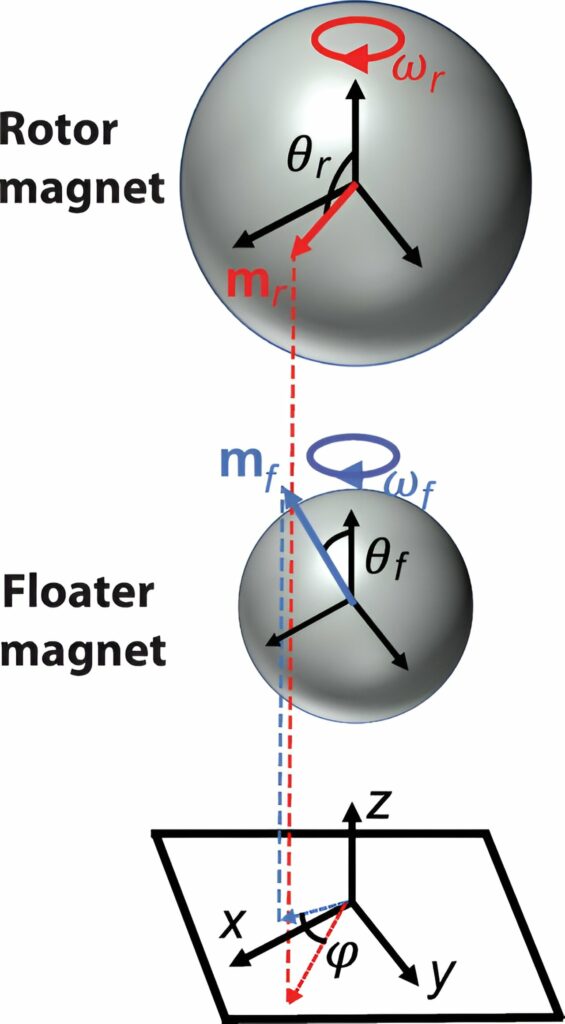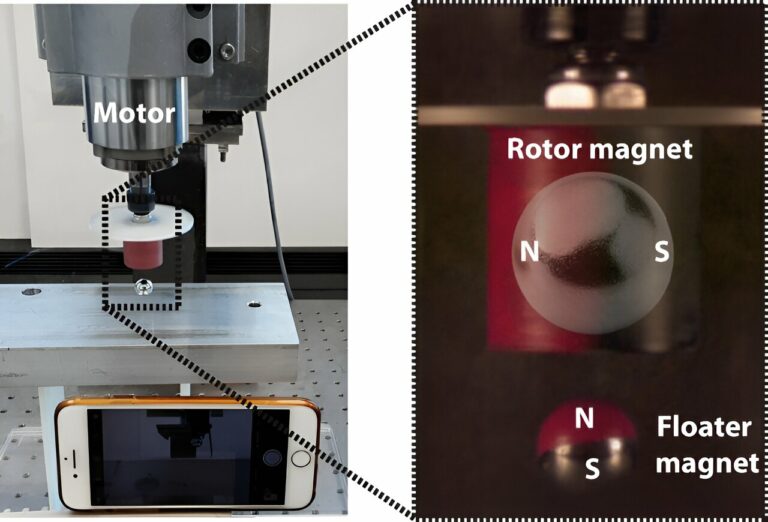The Phenomenon of Levitation Induced by a Rotating Magnet
A group of physicists from the Technical University of Denmark has elucidated the mechanism behind the phenomenon wherein a rotating magnet can induce levitation in a secondary magnet without requiring additional stabilization. In their research published in the journal Physical Review Applied, the team details the experiments conducted to unravel the intricacies of this occurrence and the insights gained from their findings. Historically, both scientific investigations and anecdotal accounts have established that when two magnets with north poles facing each other are brought into proximity, they exhibit repulsive forces.
This repulsion phenomenon has been harnessed for practical applications like levitating trains. However, the challenge lies in managing the inherent instability that arises when magnets repel each other. More recently, scientists have observed that by rapidly spinning one of the magnets, a second magnet can be repelled without the need for additional stabilization—maintaining levitation even as the first magnet undergoes movement. In their latest research endeavor, the physicists have successfully unveiled the underlying cause of this peculiar behavior.
In an effort to gain a deeper understanding of the phenomenon, the research team combined various magnet types and subjected them to varying speeds of rotation. Simultaneously, they captured the interactions using high-speed cameras and motion tracking software. Through a thorough analysis of the recorded imagery, the team successfully revealed the underlying cause behind the observed behavior.

The investigators observed that the secondary magnet, referred to as a “floater,” exhibited synchronized rotation with the rotor magnet, turning at the same speed. Additionally, they noted a slight tilt in the axis of the rotor magnet during its rotation—a circumstance that would introduce instability if the magnets were not in motion. To gain deeper insights into these dynamics, the researchers devised a simulation enabling them to manipulate the behavior of the two magnets more effectively.
Their findings revealed that the magnetic field of the rotor magnet applied a certain amount of torque on the floater, causing the two magnets to rotate in sync, influenced by a gyroscopic effect. However, the floater exhibited resistance, albeit minimal, resulting in the development of a parallel configuration. Furthermore, the researchers identified a minute misalignment in the polar axis of the rotor magnet concerning its magnetic field. The balanced interplay of attractive and repulsive forces resulting from this misalignment allowed the floater to maintain a stable position during the levitation process.
This article is republished from PhysORG under a Creative Commons license. Read the original article.
Do not forget to share your opinion with us to provide you with the best posts !





0 Comments